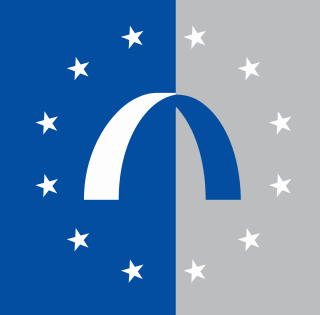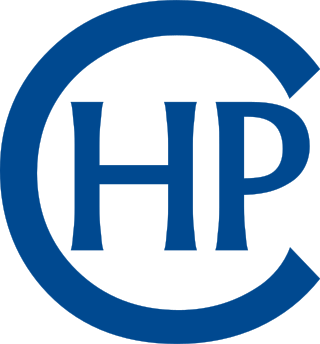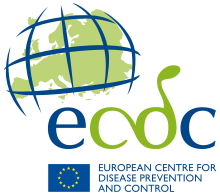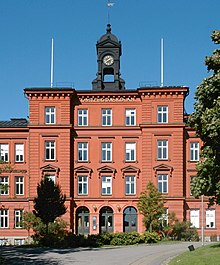The Early Warning and Response System (EWRS) for communicable diseases in the European Union was created by the European Commission to "ensure a rapid and effective response by the EU to events related to communicable diseases."
"EWRS is a web-based system linking the Commission, the public health authorities in Member States responsible for measures to control communicable diseases and the European Centre for Disease Prevention and Control (ECDC). EEA countries are also linked to the system."

The European Monitoring Centre for Drugs and Drug Addiction (EMCDDA) is an agency of the European Union located in Lisbon, Portugal, and established in 1993. In June 2022, the Council of the European Union approved a reform of the organization which will lead to an extension of its mandate and a change of name for "European Union Drugs Agency."

Disease surveillance is an epidemiological practice by which the spread of disease is monitored in order to establish patterns of progression. The main role of disease surveillance is to predict, observe, and minimize the harm caused by outbreak, epidemic, and pandemic situations, as well as increase knowledge about which factors contribute to such circumstances. A key part of modern disease surveillance is the practice of disease case reporting.

The Norwegian Institute of Public Health (NIPH) is a Norwegian government agency and research institute, and is Norway's national public health institute. It is subordinate to the Ministry of Health and Care Services. NIPH acts as a national competence institution in public health in a broad sense for governmental authorities, the health service, the judiciary, prosecuting authorities, politicians, the media and the general public, international organisations and foreign governments. The institute has around 1400 employees.
A notifiable disease is any disease that is required by law to be reported to government authorities. The collation of information allows the authorities to monitor the disease, and provides early warning of possible outbreaks. In the case of livestock diseases, there may also be the legal requirement to kill the infected livestock upon notification. Many governments have enacted regulations for reporting of both human and animal diseases.
The European Programme for Intervention Epidemiology Training (EPIET) Fellowship provides training and practical experience in intervention epidemiology at the national centres for surveillance and control of communicable diseases in the European Union. The fellowship is aimed at EU medical practitioners, public-health nurses, microbiologists, veterinarians and other health professionals with previous experience in public health and a keen interest in epidemiology.
The Health Threat Unit of the Directorate-General for Health and Consumer Protection, is responsible for terrorism surveillance and early warning of biological, chemical, and radiological threats within the European Union. The Health Threat Unit runs the Rapid Alert System, which conducts surveillance on communicable diseases and diseases caused by acts of bioterrorism. The surveillance data are coordinated and evaluated by the Health Emergency Operations Facility. Health threat information and warnings are sent to the member states by the Communication and Crisis Center (BICHAT) and the Security Office in Brussels, Belgium.

Field Epidemiology is the application of epidemiologic methods to unexpected health problems when a rapid on-site investigation is necessary for timely intervention. A more expansive definition is: The practice of Epidemiology in the field. Work is done in communities often as a public health service and as part of government or a closely allied institution. Field epidemiology is how epidemics and outbreaks are investigated, and is used to implement measures to protect and improve the health of the public. Field epidemiologists must deal with unexpected, sometimes urgent problems that demand immediate solution. Its methods are designed to answer specific epidemiologic questions in order to plan, implement, and/or evaluate public health interventions. These studies consider the needs of those who will use the results. The task of a field epidemiologist is not complete until the results of a study have been clearly communicated in a timely manner to those who need to know, and an intervention made to improve the health of the people.
Eurosurveillance is an open-access medical journal covering epidemiology, surveillance, prevention, and control of communicable diseases with a focus on topics relevant for Europe. The journal is a non-profit publication and is published by the European Centre for Disease Prevention and Control.

The Centre for Health Protection is an agency under the Department of Health in Hong Kong responsible for disease prevention and control. CHP plays the same role and function as the Centers for Disease Control in the United States, and the European Centre for Disease Prevention and Control in the European Union (EU).
The Centre for Disease Control and Prevention was created in 2001 and is under the Health Bureau of Secretariat for Social Affairs and Culture of Macau, China.

The Robert Koch Institute (RKI) is a German federal government agency and research institute responsible for disease control and prevention. It is located in Berlin and Wernigerode. As an upper federal agency, it is subordinate to the Federal Ministry of Health. It was founded in 1891 and is named for its founding director, the founder of modern bacteriology and Nobel laureate Robert Koch.
The Directorate-General for Health and Food Safety, until 2014 known as the Directorate-General for Health and Consumers, is a directorate-general of the European Commission. The DG is responsible for the monitoring and implementation of European Union policies and laws on health and food safety. It is headed by European Commissioner for Health and Food Safety Stella Kyriakides and Director-General Sandra Gallina.

The National Centre for Disease Control is an institute under the Indian Directorate General of Health Services, Ministry of Health and Family Welfare. It was established in July 1963 for research in epidemiology and control of communicable diseases and to reorganize the activities of the Malaria Institute of India. It has nine branches at Alwar, Bengaluru, Trivandrum, Calicut, Coonoor, Jagdalpur, Patna, Rajahmundry and Varanasi to advise the respective state governments on public health. The headquarters are in Sham Nath Marg, in New Delhi.
The Health Protection Surveillance Centre (HPSC) is part of Ireland's Health Service Executive.

The COVID-19 pandemic and its spread in Europe has had significant effects on some major EU members countries and on European Union institutions, especially in the areas of finance, civil liberties, and relations between member states.

Andrea Ammon is a German physician and the current director of the European Centre for Disease Prevention and Control (ECDC), a European Union (EU) agency strengthening Europe's defence against infectious disease. She advised the German government on the SARS and Influenza A virus subtype H2N2 outbreaks.
Sergio Brusin is the former Principal Expert Response and Emergency Operations at the European Centre for Disease Prevention and Control. He developed the ECDC infectious disease risk assessment methodology that is used by ECDC and other public health institutions in assessing the risk posed by communicable disease events. He advocated for far fewer travel restrictions during the COVID-19 pandemic recommending to concentrate the response efforts to stricter domestic control measures strongly enforced.
West Nile Fever (WNF) is a mosquito-borne viral infection caused by the West Nile virus (WNV), a member of the Flaviviridae family. The virus primarily incubates in a bird-mosquito transmission cycle, with humans and other mammals serving as incidental hosts.











